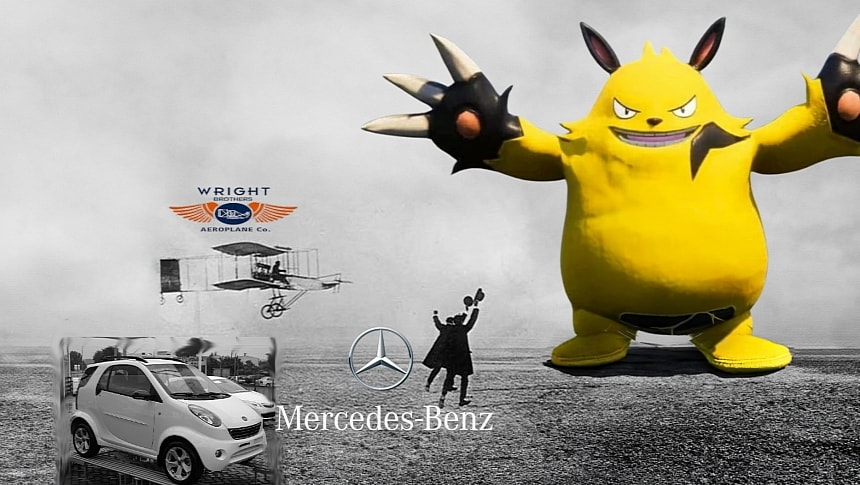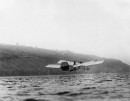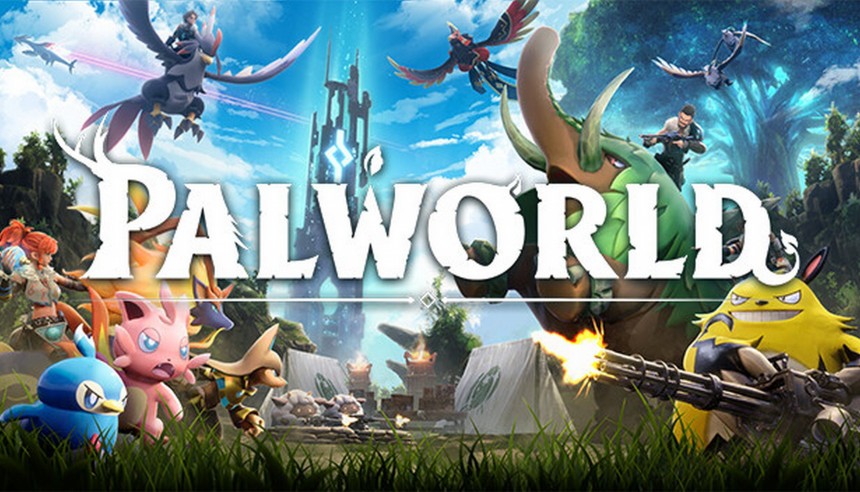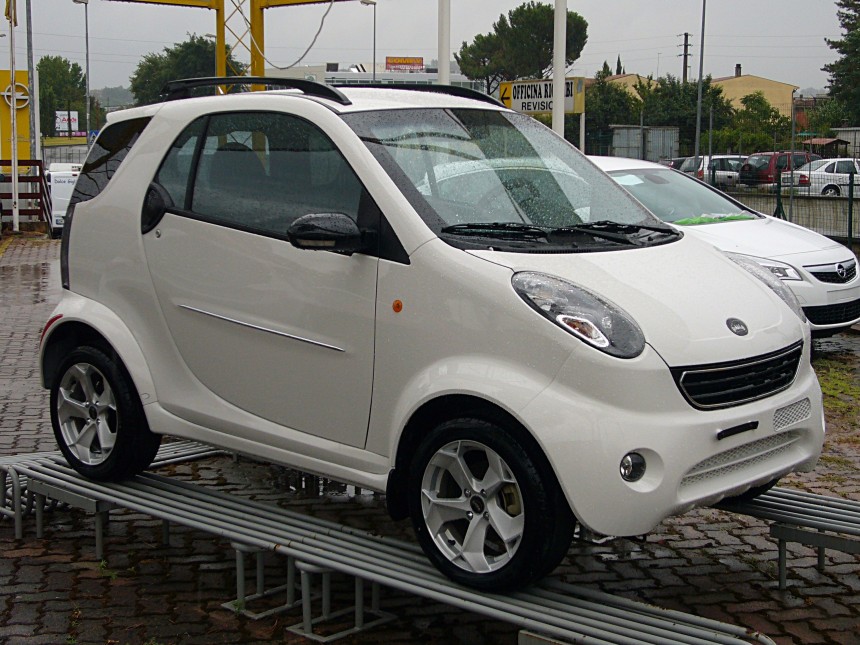In the annals of gaming history in 2024, there's bound to be a substantial section dedicated to an action-adventure survival game from a little-known Japanese dev-team called Pocket Pair. In most cases, this wouldn't be anything relevant for our purposes. It'd be just another brilliantly executed indie game that takes the world by storm what feels like at least a few times a year nowadays. But for one very specific reason, Pocket Pair's smash hit Palworld draws parallels to the paradigms of the automotive and aerospace sectors.
Reason why? It's because Palworld bears a striking resemblance to another game where you travel around taming monsters and pitting them in battle against enemy combatants. Never mind that Palworld lets your captive monsters carry firearms; it can't be denied that the game bears a striking resemblance to Pokémon. It's to the point where Nintendo's lawyers are purported to be on high alert as of recently. But if grandiosely litigious companies are what you're after, the automotive and aerospace sectors both have stories for the ages.
In fact, we have reason to suspect the pages of history related to these two fields lend clues to why Nintendo may or may not have a legal basis to take legal action on Pocket Pair one day. Those in the know will tell you Nintendo's corporate lawyers are not to be trifled with. Indeed, the argument that Nintendo holds the IP rights not only to Pokémon but also to any video game attempting to copy its gameplay mechanics holds water on the face of it if you aren’t a lawyer. But in terms of claiming the IP rights to not just a famous product but the entire sector this product founds, the Wright Brothers wrote Nintendo's playbook.
The reason why has to do with the way Wilbur and Orville Wright seemingly worked their lawyers to death in the aftermath of the original Wright Flyer's first successful flight on December 17, 1903. Proceeding this historic day, after which the Wright Flyer I never flew again, the Wright Brothers were notorious for issuing lawsuits to anyone in the United States who attempted to build anything close to resembling a heavier-than-air, human-crewed powered aircraft.
Sound familiar to Palworld situation? Well, it doesn't end there. Never mind that the Wright Flyer was by all accounts a miserable airplane that handled like a brick and was quite literally built backward. Seriously, the elevator mechanism stuck right out in front of the pilot instead of out of the back. None of it stopped the two brothers from strongly worded cease and desist letters like they were going out of style.
As a 1985 NASA study entitled "Model Research: The National Advisory Committee for Aeronautics 1915-1958" entails, this royally ticked off quite a few people. The problem was only exacerbated in November 1909 when Wilbur and Orville sold a portion of their company to a consortium of investors, including gilded-age heavyweights like Cornelius Vanderbilt, who bought a 40 percent stake in the pair's company. With the new-found financial horsepower to litigate as they pleased, the newly-formed Wright Company acted very much like a particular titanic Japanese game developer, guarding their patents and IP rights like a helicopter parent does to a "savant" child.
This was much to the annoyance of other emerging American aviation savants of the period. People like the man who wrote the playbook for Howard Hughes and Elon Musk, one of America's first free-spirited billionaire aviators, Glenn H. Curtiss. So great was Mr. Curtiss's displeasure when Federal Judge John Hazel ruled against him and in favor of the Wright Company in 1910 that the eccentric young engineer reached out to the Smithsonian. Whose former Secretary, Samuel Pierpont Langley, had failed to beat the Wright Brothers to powered flight with his homemade aircraft, the Langley Aerodrome.
The Aerodrome belly-flopped into the Potomac River twice shortly before the Wright Flyer's first successful flight. But in 1914, Glenn Curtiss offered to bring the Aerodrome out of retirement and heavily modify the brainchild of the by-then-deceased Langley. All in an effort to prove to American patent judges that it wasn't the simple act of being an aircraft that mattered but rather the mechanical makeup of each bird. In short, if the Wright Flyer was like Pokémon, Glenn Curtiss was about to build Palworld with wings. With a new engine supplied by the Smithsonian, who despised the Wrights for their constant meddling, Curtiss managed to force the Langley Aerodrome into the air for approximately five seconds.
As the above-mentioned NASA study details, Curtiss's exploits on that short flight were enough to radically change the path of American aerospace development. A founding cornerstone of NACA, America's first federal regulator of civilian and military aerospace, was that "any individual, firm, or corporation may submit a design for aircraft, aircraft parts, or aeronautical accessories," as passed by an act of Congress on July 2, 1926. By then, Wilbur Wright was long dead, and his brother Orville had retired from aviation, too worn out and tired to bother keeping up his company's ridiculous string of lawsuits.
Effectively, these pieces of legislation helped set a legal precedent for all intellectual rights of consumer products, physical or digital. It's just the sort of legislation a company doesn't want if its goal is a total monopoly on any one commodity. But if the moral of this story is "it's not about looks on the outside that matter, but rather what's inside," then Nintendo's justification to sue Pocket Pair is put in even further jeopardy with the precedent set by Mercedes-Benz back in the late 2000s.
In 2007, the Smart ForTwo from Mercedes-Benz's funky new brand of economical city cars was one of the most iconic and polarizing new cars you could buy in Europe. Whether you loved it for its bold and playful styling or hated it for being the personification of a nerdy high school wimp on four wheels, the pint-sized ForTwo was a genuine attention grabber for Smart and Mercedes-Benz's bosses at Daimler AG, of which both brands serve as the group's flagship marquees. Fresh from the metaphorical trouser stain of a merger between Daimler and Chrysler that helped neither party, the Smart ForTwo was a bright spot to cheer about.
This success was to the point that Smart announced the brand would enter the North American domestic market the following year in 2008. If the Hebei Province, China-based Shuanghuan Auto firm was aware of the ForTwo's exploits in Europe and the Americas, they did a phenomenal job of pretending they were clueless. Though first designed in 2004, the Shuanghuan Noble four-seater city hatchback bore an unmistakable resemblance to the then brand-new second-generation 451-series Smart ForTwo.
Even down to the displacement of their engines, the Noble and the ForTwo appear to have been built within millimeters of each other in their dimensions. It's like the Noble is the result of the ForTwo eating too many magic mushrooms. As you can probably guess, the Noble's existence made Daimler AG's lawyers effectively break out in a happy dance over what they must have perceived as an all-time classic slam dunk lawsuit. This was followed soon after by BMW, whose legal team claimed Shuanghuan's family SUV, the CEO, was a shameless copy of the much-lauded X5.
These legal efforts effectively banned the Shuanghuan Noble from display at several auto shows on the circuit in 2007 by the decree of an Italian court. This didn't stop the Milan-based Martin Motors S.p.A., who'd agreed to build Nobles in Italy under license as the Martin Motors Bubble, from disregarding Daimler's legal threats and displaying the Bubble outside the venue at that year's Bologna Motor Show. The Noble was ironically also sold in North America in all-electric form as the Wheego LiFe.
One would think Daimler AG's legal case against Shuanghuan was open and closed. The Chinese firm blatantly ripped off the external styling of a landmark German city car and had the audacity to sell it in the US in EV form, a market the ForTwo was getting ready to enter imminently. Or, at least, that was the line of thinking for Diamler's lawyers. But in 2009, when a Judge in Greece picked up the case, the ruling wasn't in favor of Daimler's big, scary legal team.
Instead, the Greek courts ruled, "An informed buyer would not confuse the Noble with the Smart Fortwo," as well as "If a vehicle varies in its technical specification, then any external similarities are irrelevant." So, any external similarities between two consumer products are irrelevant as long as the parts and doohickeys inside differ, huh? In that case, this really doesn't bode well for a potential future lawsuit by Nintendo against Pocket Pair, whose game engine, Unreal Engine 5, has been used to make countless 2D and 3D indie games and isn't related to a Pokémon game engine whatsoever. So long as what's under the hood is different in Palworld, Nintendo theoretically has no leg to stand on.
As for Nintendo's legal plans vis a vis Pocket Pair going forward, the latest reports indicate they're at least "investigating" potential bases to legally challenge Palworld as an act of plagiarism and/or copyright infringement. "We have received many inquiries regarding another company’s game released in January 2024; we have not granted any permission for the use of Pokémon intellectual property or assets in that game," decreed an official state from the Pokémon Company, Nintendo's spinoff subsidiary for perhaps its most valuable franchise.
"We intend to investigate and take appropriate measures to address any acts that infringe on intellectual property rights related to the Pokémon. We will continue to cherish and nurture each and every Pokémon and its world and work to bring the world together through Pokémon in the future." In short, it sounds like Nintendo is really grasping at straws, trying to bury Pocket Pair so deep under litigation it'd make Wilbur, Orville, and their billionaire investors in the Wright Company cackle. Or, at the very least, Nintendo knows full well they don’t have a legal case against Pocket Pair and are simply trying to placate their more devoted fans as much as possible. If these two automotive or aerospace anecdotes are anything to go by, Nintendo's about to be fighting an uphill battle.
In fact, we have reason to suspect the pages of history related to these two fields lend clues to why Nintendo may or may not have a legal basis to take legal action on Pocket Pair one day. Those in the know will tell you Nintendo's corporate lawyers are not to be trifled with. Indeed, the argument that Nintendo holds the IP rights not only to Pokémon but also to any video game attempting to copy its gameplay mechanics holds water on the face of it if you aren’t a lawyer. But in terms of claiming the IP rights to not just a famous product but the entire sector this product founds, the Wright Brothers wrote Nintendo's playbook.
The reason why has to do with the way Wilbur and Orville Wright seemingly worked their lawyers to death in the aftermath of the original Wright Flyer's first successful flight on December 17, 1903. Proceeding this historic day, after which the Wright Flyer I never flew again, the Wright Brothers were notorious for issuing lawsuits to anyone in the United States who attempted to build anything close to resembling a heavier-than-air, human-crewed powered aircraft.
Sound familiar to Palworld situation? Well, it doesn't end there. Never mind that the Wright Flyer was by all accounts a miserable airplane that handled like a brick and was quite literally built backward. Seriously, the elevator mechanism stuck right out in front of the pilot instead of out of the back. None of it stopped the two brothers from strongly worded cease and desist letters like they were going out of style.
This was much to the annoyance of other emerging American aviation savants of the period. People like the man who wrote the playbook for Howard Hughes and Elon Musk, one of America's first free-spirited billionaire aviators, Glenn H. Curtiss. So great was Mr. Curtiss's displeasure when Federal Judge John Hazel ruled against him and in favor of the Wright Company in 1910 that the eccentric young engineer reached out to the Smithsonian. Whose former Secretary, Samuel Pierpont Langley, had failed to beat the Wright Brothers to powered flight with his homemade aircraft, the Langley Aerodrome.
The Aerodrome belly-flopped into the Potomac River twice shortly before the Wright Flyer's first successful flight. But in 1914, Glenn Curtiss offered to bring the Aerodrome out of retirement and heavily modify the brainchild of the by-then-deceased Langley. All in an effort to prove to American patent judges that it wasn't the simple act of being an aircraft that mattered but rather the mechanical makeup of each bird. In short, if the Wright Flyer was like Pokémon, Glenn Curtiss was about to build Palworld with wings. With a new engine supplied by the Smithsonian, who despised the Wrights for their constant meddling, Curtiss managed to force the Langley Aerodrome into the air for approximately five seconds.
As the above-mentioned NASA study details, Curtiss's exploits on that short flight were enough to radically change the path of American aerospace development. A founding cornerstone of NACA, America's first federal regulator of civilian and military aerospace, was that "any individual, firm, or corporation may submit a design for aircraft, aircraft parts, or aeronautical accessories," as passed by an act of Congress on July 2, 1926. By then, Wilbur Wright was long dead, and his brother Orville had retired from aviation, too worn out and tired to bother keeping up his company's ridiculous string of lawsuits.
In 2007, the Smart ForTwo from Mercedes-Benz's funky new brand of economical city cars was one of the most iconic and polarizing new cars you could buy in Europe. Whether you loved it for its bold and playful styling or hated it for being the personification of a nerdy high school wimp on four wheels, the pint-sized ForTwo was a genuine attention grabber for Smart and Mercedes-Benz's bosses at Daimler AG, of which both brands serve as the group's flagship marquees. Fresh from the metaphorical trouser stain of a merger between Daimler and Chrysler that helped neither party, the Smart ForTwo was a bright spot to cheer about.
This success was to the point that Smart announced the brand would enter the North American domestic market the following year in 2008. If the Hebei Province, China-based Shuanghuan Auto firm was aware of the ForTwo's exploits in Europe and the Americas, they did a phenomenal job of pretending they were clueless. Though first designed in 2004, the Shuanghuan Noble four-seater city hatchback bore an unmistakable resemblance to the then brand-new second-generation 451-series Smart ForTwo.
Even down to the displacement of their engines, the Noble and the ForTwo appear to have been built within millimeters of each other in their dimensions. It's like the Noble is the result of the ForTwo eating too many magic mushrooms. As you can probably guess, the Noble's existence made Daimler AG's lawyers effectively break out in a happy dance over what they must have perceived as an all-time classic slam dunk lawsuit. This was followed soon after by BMW, whose legal team claimed Shuanghuan's family SUV, the CEO, was a shameless copy of the much-lauded X5.
One would think Daimler AG's legal case against Shuanghuan was open and closed. The Chinese firm blatantly ripped off the external styling of a landmark German city car and had the audacity to sell it in the US in EV form, a market the ForTwo was getting ready to enter imminently. Or, at least, that was the line of thinking for Diamler's lawyers. But in 2009, when a Judge in Greece picked up the case, the ruling wasn't in favor of Daimler's big, scary legal team.
Instead, the Greek courts ruled, "An informed buyer would not confuse the Noble with the Smart Fortwo," as well as "If a vehicle varies in its technical specification, then any external similarities are irrelevant." So, any external similarities between two consumer products are irrelevant as long as the parts and doohickeys inside differ, huh? In that case, this really doesn't bode well for a potential future lawsuit by Nintendo against Pocket Pair, whose game engine, Unreal Engine 5, has been used to make countless 2D and 3D indie games and isn't related to a Pokémon game engine whatsoever. So long as what's under the hood is different in Palworld, Nintendo theoretically has no leg to stand on.
As for Nintendo's legal plans vis a vis Pocket Pair going forward, the latest reports indicate they're at least "investigating" potential bases to legally challenge Palworld as an act of plagiarism and/or copyright infringement. "We have received many inquiries regarding another company’s game released in January 2024; we have not granted any permission for the use of Pokémon intellectual property or assets in that game," decreed an official state from the Pokémon Company, Nintendo's spinoff subsidiary for perhaps its most valuable franchise.
"We intend to investigate and take appropriate measures to address any acts that infringe on intellectual property rights related to the Pokémon. We will continue to cherish and nurture each and every Pokémon and its world and work to bring the world together through Pokémon in the future." In short, it sounds like Nintendo is really grasping at straws, trying to bury Pocket Pair so deep under litigation it'd make Wilbur, Orville, and their billionaire investors in the Wright Company cackle. Or, at the very least, Nintendo knows full well they don’t have a legal case against Pocket Pair and are simply trying to placate their more devoted fans as much as possible. If these two automotive or aerospace anecdotes are anything to go by, Nintendo's about to be fighting an uphill battle.








